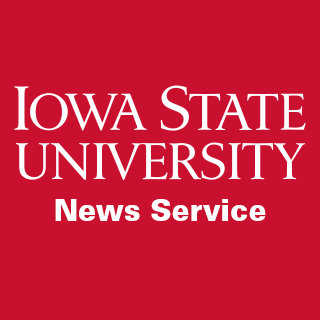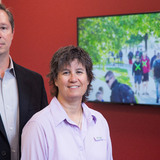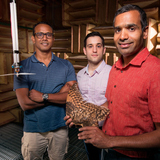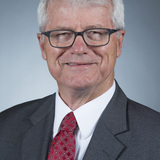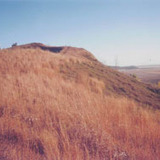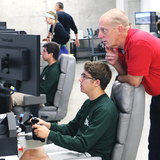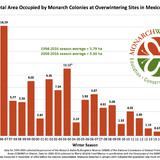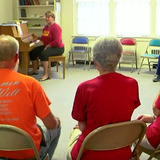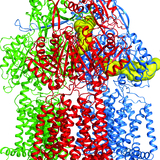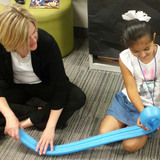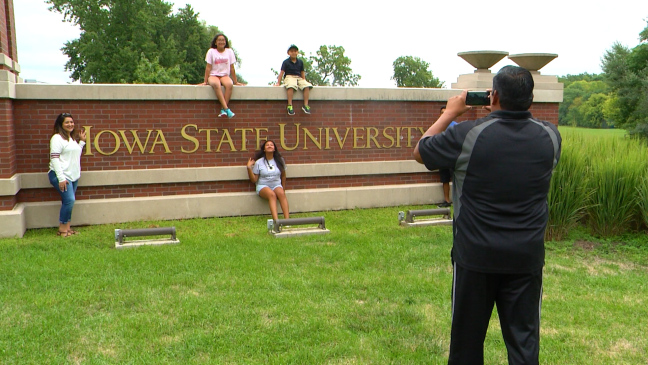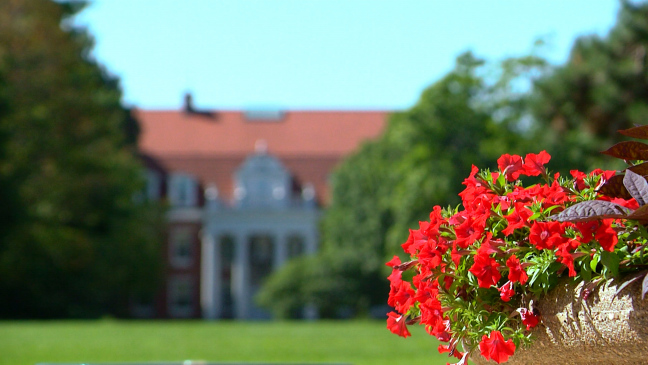News Archive
Friday, August 18 2017
-
Viruses and aphids that help crops? ISU scientists think it may be possible
Iowa State University scientists are contributing to a multi-institutional effort to help corn stand up to stress brought on by drought and disease by using viruses and aphids to activate desirable traits. It’s speculative research that could yield new insight into how viruses, insects and plants interact.
-
Statement from SVP Harmon regarding racist social media post
Iowa State University Senior Vice President for Student Affairs Martino Harmon has issued this statement in light of a social media post containing a racial slur.
-
Detecting a concealed weapon or threat is not easy, even for experienced police officers
Terrorist attacks and bombings at concerts, sporting events and airports underscore the need for accurate and reliable threat detection. However, the likelihood of a police officer identifying someone concealing a gun or bomb is only slightly better than chance, according to new research from Iowa State University.
-
Engineer looks to owl wings for bio-inspired ideas for quieter aircraft, wind turbines
Iowa State's Anupam Sharma is running high-powered computer simulations to learn exactly how owl wings manipulate air flow, pressure and turbulence to create silent flight. He and his research partners hope their studies will produce practical ideas for making ultraquiet aircraft and wind turbines.
-
President Allen outlines five-year Iowa State University tuition plan
Interim President Benjamin Allen presented a plan to the Iowa Board of Regents Tuition Task Force on Aug. 9 that would increase resident undergraduate tuition by 7 percent in each of the next five years. If approved by the regents, that would add $522 to the base tuition starting in fall 2018, and gradually rise to $684 more per year by fall 2022. The proposal also recommended a 4 percent increase for nonresident undergraduates and differential adjustments for students majoring in engineering, business and some science, technology and experiential learning programs that have a higher cost of delivery.
-
New study from Iowa State University biologist tracks nonnative plant species in timing of grassland green-up
The introduction of exotic, nonnative plant species to U.S. grasslands has led to changes in prairie phenology, or the timing of season changes. A new study from an ISU scientist details the magnitude of those changes.
-
Fourth Spaceflight Ops Workshop launches students on path to operational thinking
Iowa State's fourth Spaceflight Operations Workshop is challenging 12 students physically and mentally -- all with the goal of helping them to learn to think like an operator. Clayton Anderson, a retired astronaut and Iowa State graduate, says that's a valuable perspective for astronauts, engineers and even classroom teachers.
-
Saving the monarch butterfly: Iowa State University biologist explains census discrepancy
New research from an ISU biologist provides an explanation for why citizen scientists taking censuses of monarch butterfly populations didn’t note the same drops in population recorded in Mexico, where the monarchs spend their winters. The research supports previous studies suggesting that an increase in available milkweed could help the monarch population rebound.
-
Festival highlights benefits of music for people with Parkinson’s disease
Hosting a music festival is something Elizabeth Stegemöller has wanted to do since starting a music therapy class for people with Parkinson's disease. The festival will not only highlight her clients' musical talents, but celebrate the strength they have built through song. -
Researchers describe cell structures, mechanisms that enable bacteria to resist antibiotics
Iowa State University's Edward Yu has spent years studying the structures and mechanisms bacteria use to resist antibiotics. He and his research group recently published two more papers describing the efflux pumps and transporters that certain disease-causing bacteria use to keep antibiotics away. Yu is beginning to use that knowledge to look for ways to disable the structures and restore the effectiveness of drugs.
-
STEM-Lit program encourages play to teach K-3 students about science and reading
STEM-Lit to Go! teaches young children about science, math, technology, engineering and literature through play. Iowa State University's School of Education and 4-H Clover Kids is piloting the program this summer. It's designed for students in kindergarten through third grade and judging from their response, it's a hit.
-
The importance of business succession for rural communities
The vitality of rural economies depends as much on maintaining existing small businesses as attracting new ones, said Iowa State University economic and small business experts. Even though resources are available to assist with business succession, several factors can complicate plans to sell or pass on the business to an heir.
-
Iowa State external funding breaks half-billion dollars
Iowa State University broke another record in FY 2017, receiving $503.6 million in external funding. This is the fourth record year in a row for funding that includes grants, contracts, gifts and cooperative agreements from federal, state and local governments, as well as from corporations, nonprofits and other universities for research, academic support, scholarships and fellowships and more.

